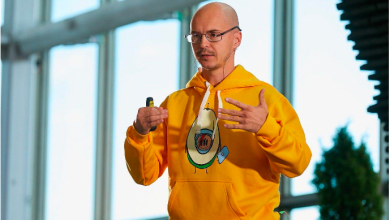Decoding Complexity: Understanding and Utilizing Debate Topics

In the vast arena of intellectual exchange, debate stand as dynamic forums where ideas collide, perspectives intersect, and the complexities of human thought are laid bare. “Decoding Complexity: Understanding and Utilizing Debate Topics” beckons us into the heart of this intellectual battleground, where participants grapple with intricacies, unravel layers of meaning, and seek to comprehend the nuanced tapestry of debate topics. As we embark on this journey, the focus is not only on deciphering the intricacies but also on harnessing this understanding to engage in constructive dialogue, fostering an environment where complexity becomes a catalyst for intellectual growth.
The Art of Deciphering: Understanding Debate Topics
1. Unveiling Layers of Complexity
- The Multifaceted Nature of Debate Topics: At the outset, understanding debate topics requires an acknowledgment of their multifaceted nature. These are not mere subjects for discussion; they are intricately woven tapestries, each thread representing a dimension waiting to be explored. Decoding complexity involves recognizing that beneath the surface lies a rich terrain of perspectives, histories, and implications.
- Surface Impressions vs. Subsurface Realities: When participants encounter a debate topic, they often form initial impressions based on surface-level information. Decoding complexity demands moving beyond these surface impressions, delving into the subsurface realities that shape the topic. This exploration involves a commitment to intellectual curiosity and an openness to uncovering the layers beneath.
2. Embracing Nuance and Ambiguity
- The Role of Nuance in Debate: Nuance is the lifeblood of complex topics. Each debate topic carries nuances that require careful consideration. It’s a dance with ambiguity, where participants navigate through shades of gray rather than seeking simplistic black-and-white answers. Decoding complexity involves embracing nuance, acknowledging that issues rarely fit into neat categories and that genuine understanding requires a willingness to engage with the gray areas.
- Avoiding Reductionism: The art lies in avoiding reductionism—the tendency to oversimplify complex issues. Participants must resist the allure of reducing debate topics to easily digestible soundbites. Decoding complexity demands an appreciation for the intricate interplay of factors, acknowledging that real-world issues are seldom straightforward and warrant a thoughtful examination of their multifaceted dimensions.
Navigating Historical Threads: Understanding Context
1. Contextual Anchors in Debate Topics
- The Historical Tapestry of Topics: Many debate topics carry historical baggage, woven into the fabric of their existence. Understanding these topics requires an awareness of historical threads that have shaped their development. Historical context serves as an anchor, grounding discussions in the events, movements, and decisions that have influenced the trajectory of the topic over time.
- Appreciating Contextual Sensitivity: Navigating historical threads demands contextual sensitivity. Participants must recognize that the historical layers of a debate topic contribute to its complexity. The art of understanding involves placing contemporary discussions within the context of the past, acknowledging the echoes of history that reverberate through the debates of today.
2. The Interplay of Past and Present
- Evaluating the Evolution of Ideas: Decoding complexity involves evaluating how ideas have evolved over time. A debate topic is not a static entity; it carries the imprints of past debates, changing societal norms, and evolving perspectives. Participants must engage in a dialogue that recognizes the interplay of past and present, understanding that the layers beneath the surface are shaped by a continual process of intellectual evolution.
- Avoiding Anachronistic Assumptions: Anachronistic assumptions—imposing contemporary values onto historical events—can obscure the layers of understanding. The art lies in avoiding such assumptions and approaching historical dimensions of debate topics with a willingness to appreciate the complexity of the contexts in which ideas unfolded.
The Contours of Controversy: Engaging with Tension
1. Provocation as a Catalyst
- Controversy as a Source of Complexity: Controversial aspects often inject complexity into debate topics. Controversy is not merely a side effect; it is a source of tension that demands thoughtful engagement. Decoding complexity involves recognizing controversy as a catalyst for intellectual exploration, prompting participants to navigate through layers of differing opinions, values, and ethical considerations.
- Constructive Handling of Controversy: The art lies in the constructive handling of controversy. Rather than shying away from contentious elements, participants must embrace them as opportunities for deeper understanding. Engaging with controversy requires a commitment to respectful dialogue, where diverse perspectives are acknowledged, and the layers of tension become spaces for learning and growth.
2. Ethical Dimensions of Controversy
- Ethical Considerations in Debate: Controversy often brings ethical considerations to the forefront. Understanding debate topics involves grappling with the ethical dimensions that underpin controversial elements. Participants must navigate through the layers of ethical complexity, considering the potential impact of their discussions on individuals, communities, and broader societal narratives.
- Responsible Engagement: Decoding complexity requires a commitment to responsible engagement with controversial elements. This involves thoughtful framing of debate topics, anticipating potential ethical challenges, and fostering an environment where participants can explore contentious issues while upholding ethical standards. The layers of controversy become spaces for ethical reflection and a commitment to the responsible use of intellectual discourse.
Constructive Dialogue: Utilizing Understanding
1. The Role of Critical Thinking
- Critical Thinking as a Compass: Understanding debate topics and decoding complexity demand the application of critical thinking skills. Critical thinking serves as a compass, guiding participants through the layers of information, perspectives, and nuances. The art lies in cultivating critical thinking as a fundamental tool for navigating the intellectual terrain of debates.
- Questioning Assumptions and Biases: Critical thinking involves questioning assumptions and biases that may influence interpretations of debate topics. Participants must be willing to challenge their own preconceptions, recognizing that biases can obscure the layers of understanding. The layers of complexity become transparent as critical thinking acts as a beacon, illuminating hidden dimensions.
2. Fostering Open-Mindedness
- Open-Minded Exploration of Perspectives: Utilizing understanding in debates requires a commitment to open-minded exploration. Participants must approach discussions with a willingness to consider diverse perspectives, even those that challenge their own views. Open-mindedness becomes the bridge that allows participants to traverse the layers of complexity, appreciating the richness that different viewpoints bring to the discourse.
- Embracing Cognitive Diversity: The art of utilizing understanding involves embracing cognitive diversity. Participants with varied thinking styles contribute to a more robust exploration of debate topics. The layers of complexity are enriched by the diversity of thought, and the collective intelligence that emerges transcends individual perspectives.
The Evolutionary Impact: Growth Through Debate
1. Intellectual Evolution Through Debates
- Debates as Catalysts for Growth: Engaging with debate topics is not merely an intellectual exercise; it is a journey of intellectual evolution. Participants grow through the process of decoding complexity, confronting nuances, and engaging with diverse perspectives. Debates become catalysts for personal and collective growth, shaping individuals who are better equipped to navigate the complexities of the world.
- Continual Learning and Adaptation: The layers of understanding extend beyond individual debates, influencing how participants approach future discussions and the broader landscape of intellectual exploration. The art lies in recognizing that the impact of debates is not confined to the immediate exchange but ripples outward, contributing to a continual process of learning and adaptation.
2. Contribution to Societal Understanding
- Debates as Contributors to Societal Understanding: The artful utilization of understanding in debates extends to a broader societal context. As participants engage with complex topics, they contribute to the collective understanding of societal challenges, historical narratives, and ethical considerations. The layers of complexity uncovered in debates become integral to shaping the broader intellectual currents of society.
- Education and Dialogue as Agents of Change: Education and dialogue, facilitated through debates, become agents of change. By decoding complexity and utilizing understanding, participants contribute to a culture of inquiry, critical thinking, and open dialogue. The layers beneath the surface become the foundations upon which a society can build a more informed, empathetic, and intellectually vibrant future.
Conclusion: Decoding Complexity as a Transformative Journey
“Decoding Complexity: Understanding and Utilizing Debate Topics” is not a destination; it is a transformative journey into the heart of intellectual exploration. The layers of complexity within debate topics are not barriers to understanding; they are gateways to growth, enlightenment, and a richer understanding of the world. As participants engage in debates with the aim of decoding complexity, they become architects of a more nuanced, empathetic, and intellectually vibrant discourse.
The art of decoding complexity involves not only understanding the layers of debate topics but also harnessing this understanding to foster constructive dialogue and contribute to the broader tapestry of human knowledge. Each debate becomes an opportunity for participants to navigate the intricate terrain of ideas, where the decoding of complexity becomes a shared endeavor, weaving together diverse perspectives into a fabric that reflects the richness of the human intellect.




